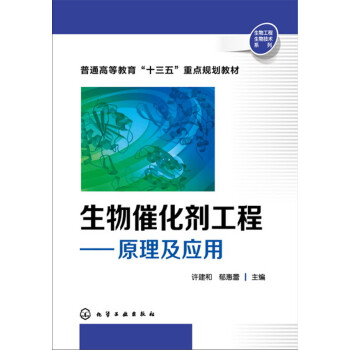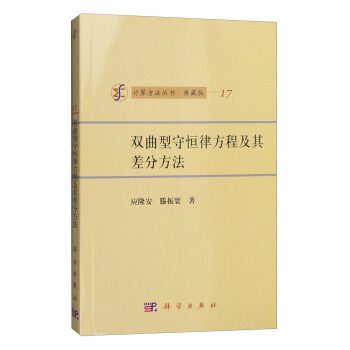![理论物理的数学原理(英文版) [Mathematical Principles of Theoretical Physics]](https://pic.tinynews.org/11749015/55caf7daN3b21478a.jpg)
理论物理的数学原理(英文版) [Mathematical Principles of Theoretical Physics] pdf epub mobi txt 电子书 下载 2025
- Theoretical Physics
- Mathematics
- Physics
- Quantum Mechanics
- Classical Mechanics
- Electromagnetism
- Relativity
- Mathematical Methods
- Advanced Physics
- Physics Textbooks

具体描述
内容简介
The objectives of this book are to derive experimentally verifiable laws of Nature based on a few fundamental mathematical principles, and to provide new insights and solutions to a number of challenging problems of theoretical physics. This book focuses mainly on the symbiotic interplay between theoretical physics and advanced mathematics.内页插图
目录
Chapter 1 General Introduction1.1 Challenges of Physics and Guiding Principle
1.2 Law of Gravity, Dark Matter and Dark Energy
1.3 First Principles of Four Fundamental Interactions
1.4 Symmetry and Symmetry-Breaking
1.5 Unified Field Theory Based on PID and PRI
1.6 Theory of Strong Interactions
1.7 Theory of Weak Interactions
1.8 New Theory of Black Holes
1.9 The Universe
1.10 Supernovae Explosion and AGN Jets
1.11 Multi-Particle Systems and Unification
1.12 Weakton Model of Elementary Particles
Chapter 2 Fundamental Principles of Physics
2.1 Essence of Physics
2.1.1 General guiding principles
2.1.2 Phenomenological methods
2.1.3 Fundamental principles in physics
2.1.4 Symmetry
2.1.5 Invariance and tensors
2.1.6 Geometric interaction mechanism
2.1.7 Principle of symmetry-breaking
2.2 Lorentz Invariance
2.2.1 Lorentz transformation
2.2.2 Minkowski space and Lorentz tensors
2.2.3 Relativistic invariants
2.2.4 Relativistic mechanics
2.2.5 Lorentz invariance of electromagnetism
2.2.6 Relativistic quantum mechanics
2.2.7 Dirac spinors
2.3 Einstein's Theory of General Relativity
2.3.1 Principle of general relativity
2.3.2 Principle of equivalence
2.3.3 General tensors and covariant derivatives
2.3.4 Einstein-Hilbert action
2.3.5 Einstein gravitational field equations
2.4 Gauge Invariance
2.4.1 U (1) gauge invariance of electromagnetism
2.4.2 Generator representations of SU (N)
2.4.3 Yang-Mills action of SU (N) gauge fields
2.4.4 Principle of gauge invariance
2.5 Principle of Lagrangian Dynamics (PLD)
2.5.1 Introduction
2.5.2 Elastic waves
2.5.3 Classical electrodynamics
2.5.4 Lagrangian actions in quantum mechanics
2.5.5 Symmetries and conservation laws
2.6 Principle of Hamiltonian Dynamics (PHD)
2.6.1 Hamiltonian systems in classical mechanics
2.6.2 Dynamics of conservative systems
2.6.3 PHD for Maxwell electromagnetic fields
2.6.4 Quantum Hamiltonian systems
Chapter 3 Mathematical Foundations
3.1 Basic Concepts
3.1.1 Riemannian manifolds
3.1.2 Physical fields and vector bundles
3.1.3 Linear transformations on vector bundles
3.1.4 Connections and covariant derivatives
3.2 Analysis on Riemannian Manifolds
3.2.1 Sobolev spaces of tensor fields
3.2.2 Sobolev embedding theorem
3.2.3 Differential operators
3.2.4 Gauss formula
3.2.5 Partial differential equations on Riemannian manifolds
3.3 Orthogonal Decomposition for Tensor Fields
3.3.1 Introduction
3.3.2 Orthogonal decomposition theorems
……
Chapter 4 Unified Field Theory of Four Fundamental Interactions
Chapter 5 Elementary Particles
Chapter 6 Quantum Physics
Chapter 7 Astrophysics and Cosmology
Bibliography
Index
前言/序言
用户评价
当我合上这本书,心中涌起的更多的是一种满足感,一种对知识深邃的敬畏。这本书的价值,绝不仅仅在于它所承载的物理知识本身,更在于它所传达的一种严谨的治学态度和深刻的哲学思考。作者在论述过程中,始终保持着一种审慎的态度,对于每一个结论,他都会追溯其根源,分析其前提条件,并且清晰地指出其局限性。这种对知识的敬畏和对真理的追求,让我深受感动。他没有试图将一切都说得“完美无缺”,而是鼓励读者去认识到科学的局限性,去保持开放的心态。我尤其欣赏他在书中所展现的,理论物理研究中那种“美”的追求。他会让我们看到,那些看似抽象的数学公式背后,隐藏着宇宙运行的和谐与优雅。这种“美”的体验,是任何简单科普读物都无法给予的。这本书让我意识到,理论物理不仅仅是冷冰冰的数字和符号,它更是一种对宇宙终极奥秘的浪漫探索。我感觉自己的思维方式得到了极大的拓展,看待世界的方式也因此变得更加深刻和广阔。
评分这套书的装帧设计真是深得我心。厚重而又不失质感,每一页纸张的触感都恰到好处,翻阅时有一种沉静的力量,仿佛能让人瞬间沉浸在知识的海洋中。封面采用了经典的暗色调,点缀着金色的书名,低调奢华,散发出一种学究气,让人一看就知道不是那种浮光掠影的畅销读物。拿到手里,沉甸甸的感觉,就预示着里面蕴含的分量。我尤其喜欢它内页的排版,字体大小、行间距都经过了精心的考量,即便内容再复杂,读起来也不会感到眼花缭乱。而且,书页边缘的细微打磨,也展现了出版商的用心。我一直觉得,一本好书,从它的物理形态开始,就应该传递出一种值得尊敬的态度。这套书无疑做到了这一点。我毫不犹豫地将它摆放在书架最显眼的位置,它不仅仅是一本书,更像是一件值得珍藏的艺术品,每次看到它,都能唤起我对知识的敬畏和对探索的热情。我想,对于那些真正热爱理论物理,并且愿意投入时间和精力去深入钻研的读者来说,这样一本在形式上也足够严谨和精美的著作,绝对是不可多得的宝藏。
评分这本书的阅读体验,与其说是“学习”,不如说是一种“探险”。每一次翻开它,都像是踏入了一个未知的领域,充满挑战,但也处处闪烁着智慧的光芒。作者在梳理理论体系的时候,非常有条理,逻辑链条清晰得令人惊叹。他不会急于求成,而是会花大量篇幅去铺垫,去解释每一个概念的起源和发展。这让我能深刻地理解,我们今天所熟知的那些理论,并非凭空出现,而是经历了漫长而艰辛的探索过程。更让我印象深刻的是,作者在描述某些复杂的物理现象时,会穿插一些历史的片段,介绍相关的科学家是如何思考的,他们遇到了哪些困难,又是如何一步步克服的。这使得阅读过程充满了人情味,我不再感觉自己是在对着枯燥的文字发呆,而是仿佛在与那些伟大的思想家进行跨越时空的对话。这种叙述方式,不仅增加了阅读的趣味性,更重要的是,它能够激发我的思考,让我尝试从不同的角度去理解问题。我常常在读完一段后,会停下来,反复咀嚼作者的思路,然后尝试自己去推导,去验证。这种主动参与的阅读过程,让我受益匪浅。
评分坦白讲,我在这本书上花费的时间和精力,远超我最初的预期。这不是一本可以快速翻阅的书,它需要你慢下来,静下心来,去细细品味每一个字句,去反复琢磨每一个公式。我常常会在某个定理的推导过程中卡住,然后不得不放下书,去查找相关的背景知识,去翻阅其他的参考资料,甚至花上一天的时间去理解一个看似简单的证明。但是,这种“痛苦”却是令人着迷的。每一次的“攻克”都给我带来巨大的成就感,让我觉得自己离真理又近了一步。我喜欢作者在书中抛出的那些问题,它们并非是简单的是非题,而是引导我去深入思考,去探索理论的边界。他不会直接给出答案,而是会展示多种可能的思路,让我自己去判断,去选择。这让我觉得自己不仅仅是在接受知识,更是在学习如何进行科学研究。我甚至开始尝试在阅读的时候,用笔在空白处做笔记,画图,写下自己的疑问和想法。这本书已经不仅仅是我的阅读材料,它更像是一个伴侣,陪伴我一起在理论物理的海洋中航行,时而风平浪静,时而波涛汹涌,但始终充满着探索的乐趣。
评分说实话,我一开始对这本书的期待并没有那么高。市面上关于理论物理的科普读物太多了,很多都流于表面,或者为了吸引眼球而过于简化,导致概念模糊,甚至产生误导。然而,当我真正开始阅读这本书的第一章时,我的看法就完全改变了。作者的叙述方式非常独特,他并没有直接抛出各种高深的公式和定理,而是从最基础的物理思想和数学工具入手,循序渐进地构建起整个理论框架。这种“由浅入深”的处理方式,对于我这种并非专业出身,但又对理论物理充满好奇的读者来说,简直是福音。他善于用类比和直观的例子来解释抽象的概念,让我能够更容易地理解那些看似遥不可及的物理世界。更重要的是,他始终强调数学在理论物理中的核心作用,而不是将数学仅仅当作一种工具。他会详细解释每一个数学概念是如何产生的,以及它在物理学中扮演的角色。这让我不再是死记硬背公式,而是真正理解了“为什么”要用这样的数学方法。我感觉自己正在和作者一起,一步步地构建起对宇宙深层规律的认识。
相关图书
本站所有内容均为互联网搜索引擎提供的公开搜索信息,本站不存储任何数据与内容,任何内容与数据均与本站无关,如有需要请联系相关搜索引擎包括但不限于百度,google,bing,sogou 等
© 2025 book.tinynews.org All Rights Reserved. 静思书屋 版权所有


![数量性状遗传分析 [Genetic Analysis of Quantitative Traits] pdf epub mobi 电子书 下载](https://pic.tinynews.org/11768632/565568dfN95bd60d3.jpg)


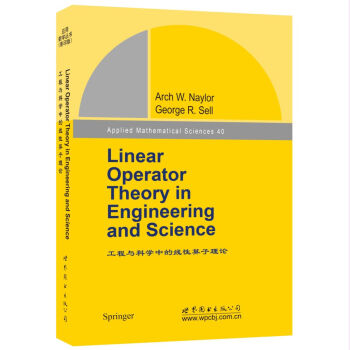

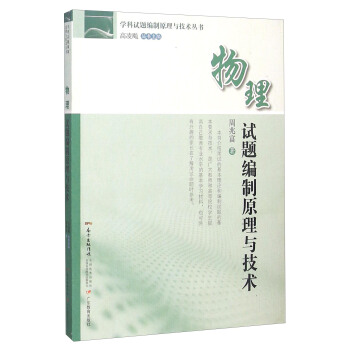


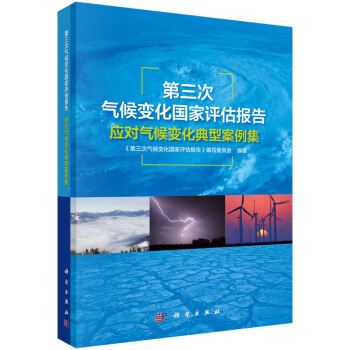

![工程电磁场(第2版) [Engineering Electromagnetic Fields] pdf epub mobi 电子书 下载](https://pic.tinynews.org/11867092/56a71cd4N24da876a.jpg)



![现代动物分类学导论 [Introduction to Modern Zootaxnonomy] pdf epub mobi 电子书 下载](https://pic.tinynews.org/11885412/56ebcf83Ne8854edf.jpg)
